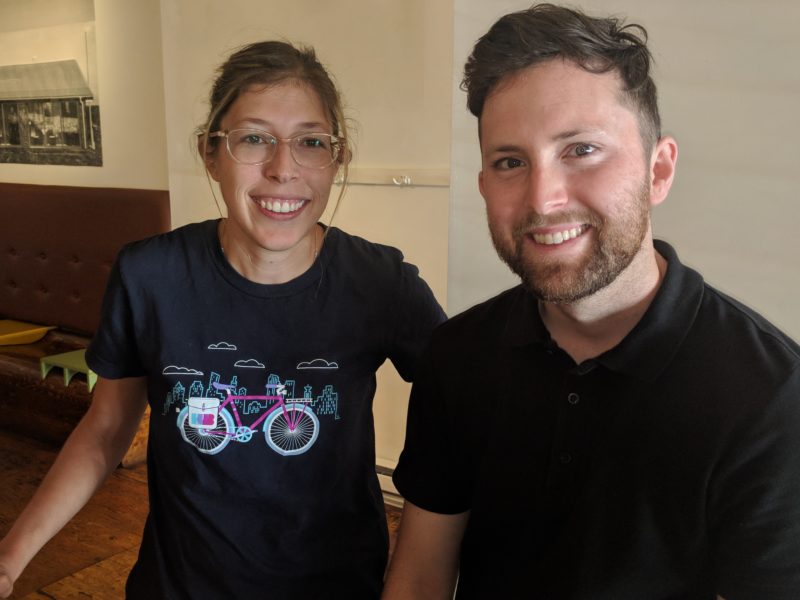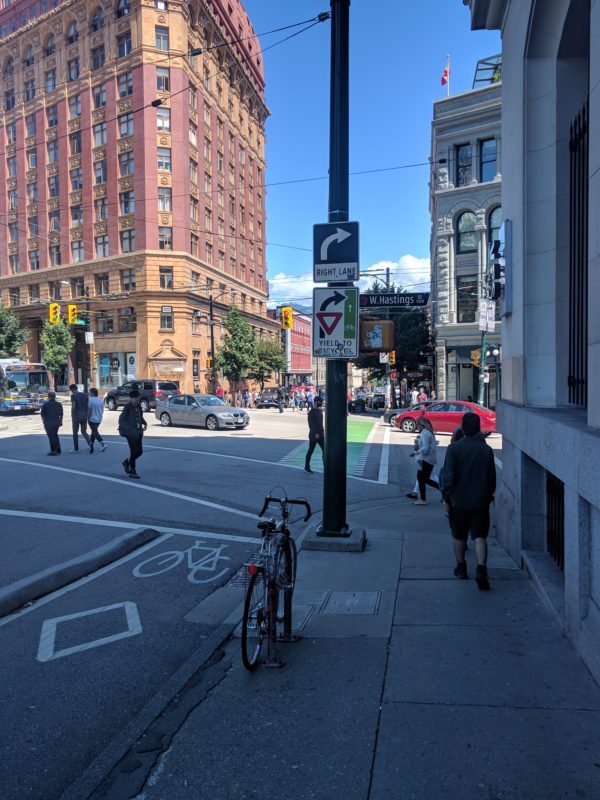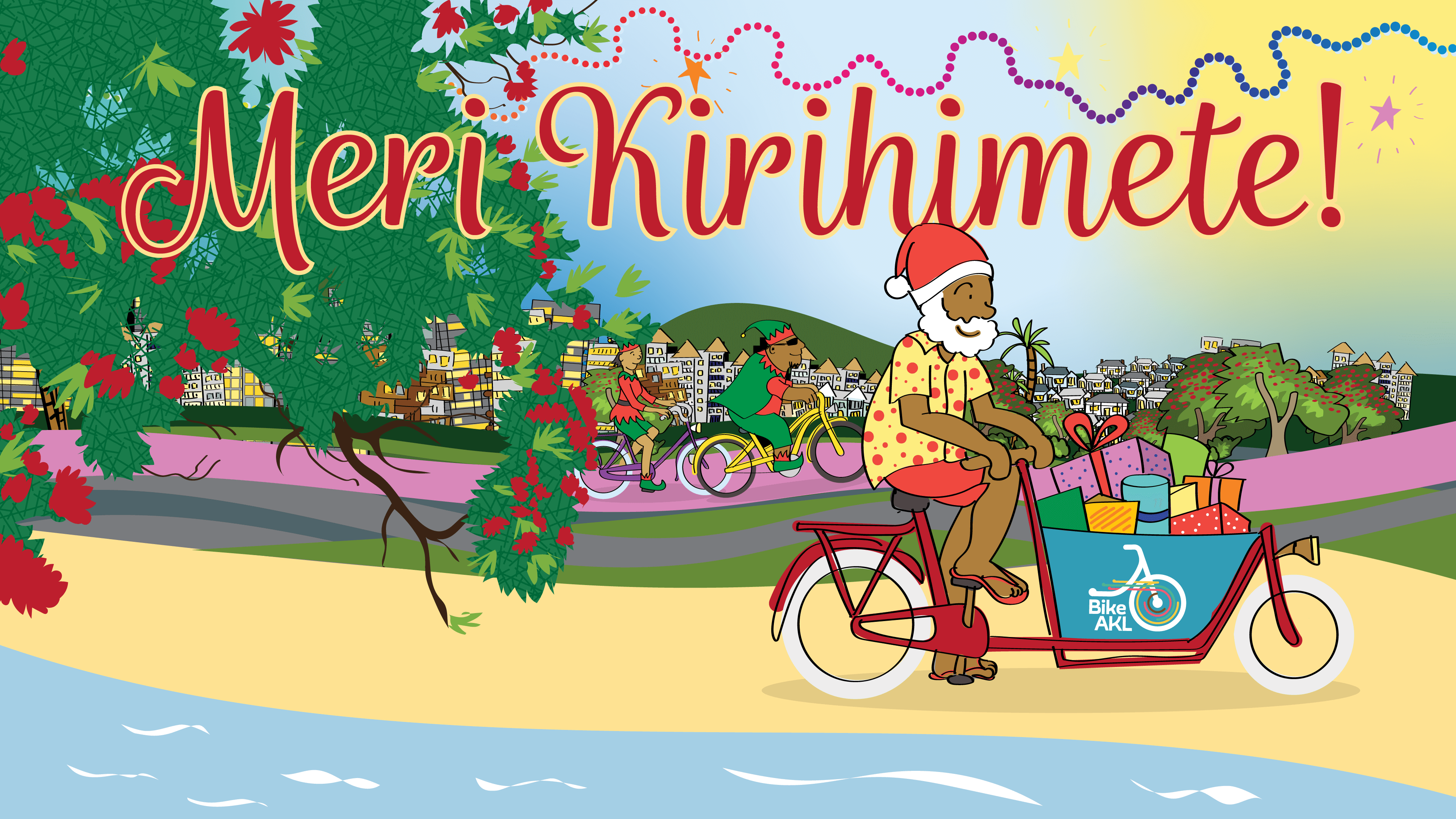A common factor in just about every transition to a bike-friendly city is advocacy. In Vancouver’s case, that advocacy comes largely in the form of HUB Cycling, a charitable non-profit that works to get more people cycling more often in Metro Vancouver through education, action, and events. Celebrating its 20th anniversary this year, HUB has over 2,400 members, 11 active committees, and has racked up an impressive list of infrastructure wins. Plus, with Vancouver committing to ambitious cycling targets as part of its Transportation 2040 blueprint, HUB Cycling has the wind behind it.
What does it take to create that kind of momentum? Ross Inglis spoke with HUB Project Manager Andrew Picard and Membership Manager Cathy Acuna:
Bike Auckland: What’s your summary of the state of cycling in the City of Vancouver today?
Andrew: The city is certainly a leader. We’re seeing more and more people – transport professionals, politicians and tourists — come to see why Vancouver is what it is in terms of infrastructure. In some ways we have so much momentum that it’s hard to stop. We’ve got to the position where we’re receiving international recognition for it.

Cathy: And participation in our bi-annual Bike to Work Weeks continue to grow in popularity. This past spring, nearly 12,000 people registered and visited over 80 celebration stations across Metro Vancouver. Events, promotion and education are an important part of getting people cycling, and Vancouver is providing more and more of this.
BA: Why has Vancouver has been so successful with its build-out of cycling infrastructure compared to other North American cities?
Andrew: The City’s Greenest City Action Plan is a catalyst for sustainable planning and increasing active modes of travel has been a major part of that. Certainly, in the last five to 10 years we’ve seen a significant increase in all ages and abilities (AAA) cycling infrastructure, in part due to a lot of political support from the council and mayor. For example, AAA infrastructure now exists along and adjacent to the Burrard St Bridge. It took several years, but city data shows that these critical upgrades have made it safer and more efficient for all road users. That has spurred a lot of momentum with other projects. City staff are also on board – many of them bike riders themselves. Together with elected officials, they are successfully implementing a connected network – not just piecemeal bits of bike lane – which is very important to actually draw out new people by making them feel safe for their full journey, not just part of it.
The City also recently produced an AAA design guide and so our Vancouver Local Committee is able to hold them to a high standard for each and every project.
Cathy: Promotion is key too. We know that more cycling means happy, healthier, and more connected communities. When we organize events like Bike to Work Week, Bike to Shop Days, and Bike the Night, we’re showing the public that transport cycling is possible. The next logical step more many, is to support more cycling infrastructure.
BA: Is a politically liberal environment a prerequisite for this success?
Andrew: I think so, that’s definitely been a huge help. Another key is staff from the City of Vancouver are well educated in best-practice infrastructure design. And our Local Committees play a key role as stakeholders to municipal staff on various infrastructure projects throughout Metro Vancouver. But certainly Vancouver is leading the charge in this regard.
Cathy: Political support has been essential but it hasn’t been without opposition, of course. An example: the Hornby St protected bike lane, which the Downtown Business Improvement Association at the time, in the mid 2000s, was quite hesitant about. That’s changed a lot; many years later the DVBIA is now a major supporter of HUB Cycling and advocate for increasing sustainable transportation in the downtown core. We often have them as speakers, they’re a major partner of HUB Cycling.
It also goes back to organizations such as ours who focus on strategic collaboration- whether that’s with city staff, local businesses, the regional transit agency, and even the province. The fact that not a single person showed up to speak against the latest AAA bike lane proposal on the Cambie St Bridge speaks volumes to the work we and the City do to promote cycling in a positive way.
BA: Have you experienced the phenomenon of a small but passionate group of locals blocking the construction of new cycling infrastructure?
Andrew: Yes. There has been some resistance to install a separated bike path in Kitsilano Park. This project is overseen by the Parks Board- a separate entity from the City’s planning department and historically, has focused more on recreation. Providing separation for people cycling will close the last remaining gap along Vancouver’s iconic Seaside Greenway. It’s been deferred but our Vancouver Local Committee is working hard to convince stakeholders that if approved, the park will become more enjoyable for all users.
BA: Once the infrastructure has gone in, do you notice a change in the behaviour of drivers?

Cathy: There’s still some work to be done. We’ve had some issues with the government entity that administers driver testing and licenses; they could be doing far more to improve road user education to improve safety. One of the main things we still need to do is to educate drivers, especially with new infrastructure, many more people cycling on the roads, and drivers that took their tests ages ago and know very little about how to deal with either of those. Generally, however, Vancouver is seen as a good place to drive because the infrastructure is so modern.
Andrew: We’re also part of a road safety law reform group. We’re working with health practitioners, lawyers, and elected officials to improve BC’s motor vehicle act, especially to make it safer for people cycling and walking. Part of that is behaviour change for drivers. Things like decreasing the number of doorings and left-crosses, introducing a safe passing distance, and reducing neighbourhood street speed limits to 30 km/hr.
BA: Vancouver drivers do appear to be very polite, at least by Auckland standards.
Andrew: I think visibility of people cycling plays into this. If you’re a driver crossing 10th Avenue or any of the other neighbourhood bikeways, you have to be vigilant because of the sheer volume of people cycling. The more protected cycling infrastructure we have, especially at intersections, the greater the reduction in conflict.
BA: Are you at the point of second-generation infrastructure?
Andrew: In some locations, yes – we’re definitely upgrading early infrastructure. We started out with painted lanes and off-street paths, of course. Vancouver is known to be unique for its neighbourhood bikeways–signed at 30km/hr– across town on residential streets. We’re starting to upgrade those by reducing the number of parked cars at cross streets and adding other traffic calming measures. As of this year, most of the Seaside Greenway has been upgraded to separate pedestrians from people cycling.
BA: What’s the end game? Will you know when the job is done and you don’t need a HUB anymore?
Andrew: It seems like Vancouver is well connected but there’s lots to improve. That’s why we have our #UnGapTheMap campaign to prioritize key gaps that need filling across the region. Our Local Committees continue to play a key role in this process. We hope to see more leapfrog solutions like cycling highways, which we are starting to see with projects Hwy1- Lower Lynn on the North Shore, and which we envision to connect major destinations around the region. Our vision is in Metro Vancouver in 2030, cycling is a popular transportation option because it is fun, safe, convenient and comfortable for people of all ages and cycling abilities. Investment in cycling is aligned with ambitious government mode share goals, cycling education is universally accessible, and cycling facilities are connected throughout the region.




